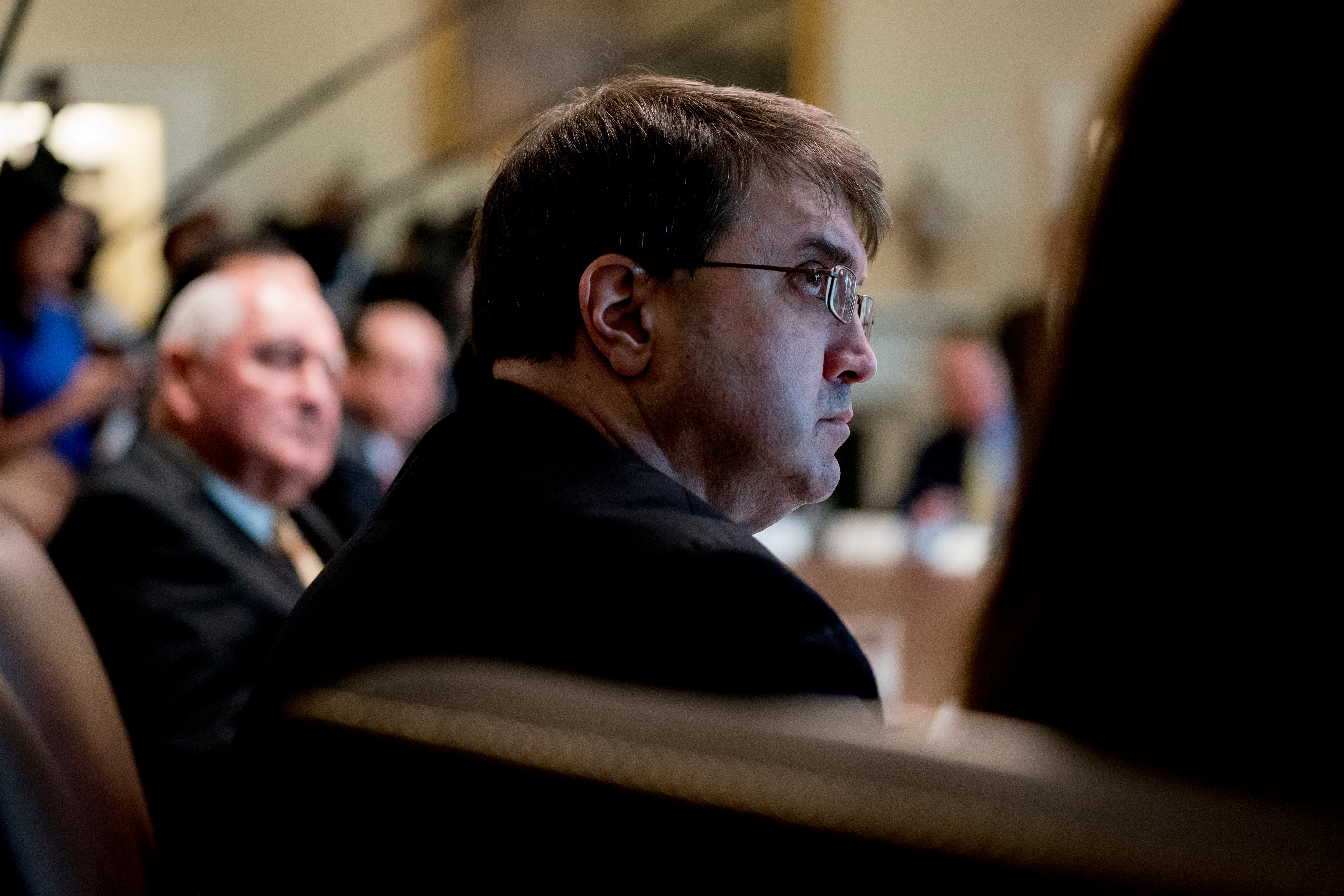WASHINGTON — President Donald Trump is proposing another big increase in Veterans Affairs spending for fiscal 2020 — but also reintroducing a controversial cost-savings measure that veterans groups have long opposed.
The increased VA spending — up to $216 billion, an increase of $19 billion or 9.5 percent from fiscal 2019 — comes as a host of non-defense programs face steep cuts in the budget proposal. The Departments of Transportation, Education, Energy and State all face double-digit funding cuts under the president’s plan, which is already facing fierce opposition from Democrats in Congress.
In a statement, VA Secretary Robert Wilkie said the increase in his department’s budget “supports the most significant transformation of VA since its inception, positioning the department as the premier provider for veterans’ services and benefits.” He also called it a continuation of the administration’s commitment to supporting veterans.
RELATED

Under Trump and his predecessors, the department has seen steady budget increases since the start of the wars in Iraq and Afghanistan.
The fiscal 2020 budget request is nearly double the total VA funding level from 10 years ago and more than four times the total in fiscal 2001, when the entire budget was about $45 billion.
But a 9.5 percent jump in total VA funding would be among the largest single-year increases over that span. The total includes about $123 billion in mandatory funding and $93 billion in discretionary programs.
Medical costs alone account for more than $80 billion of the discretionary money. Community care funding will increase by about $1 billion from fiscal 2019 levels, accounting for about 19 percent of the total VA medical budget.
That’s in line with the ratio of spending in recent years for appointments and care outside the VA system, but it is certain to undergo extra scrutiny as department leaders introduce new rules for community care eligibility in June.
The overhaul of private-sector medical appointment availability has been a centerpiece of Trump’s promised VA reforms but has also draw criticism as a privatization of VA responsibilities. Some veterans groups worry too much funding will be shifted to those programs and away from VA health care.
RELATED

Another budget item certain to draw criticism is the reintroduction of plans to “round down” veterans’ annual cost-of-living increases to the nearest whole dollar. The move would cost an individual veteran no more than $12 annually, but it has been decried by veterans groups in the past as unfairly using their earned benefits to balance the budget.
White House officials have countered that rounding down annual benefit hikes was VA policy from the late 1990s until 2013. Returning to the move will save $36 million in fiscal 2020 alone, and more than $2 billion over the next 10 years.
Administration planners also want to place education benefit caps on flight training schools, a proposal that many veterans advocates have backed but has faced strong opposition from education lobbyists. That move would save about $30 million annually.
Under the president’s plan, VA would spent more than $1.6 billion in fiscal 2020 on improvements to electronic medical records, part of the department’s 10-year plan to bring those files in line with Defense Department health computer systems.
That’s up nearly 45 percent from spending totals this year and has raised concerns from some congressional Republicans in recent months.
While most VA accounts would see significant increases, medical research would be cut by about $17 million (2 percent), and construction accounts would be cut by more than $1.3 billion (45 percent). Both moves are likely to raise concerns about the administration’s long-term plans to maintain and advance department medical care.
About $9.4 billion would be spent on programs to prevent suicide among veterans (4.5 percent more than fiscal 2019) and about $1.8 on outreach to homeless veterans. The number of full-time VA employees would rise to nearly 394,000 individuals.
Per law, the budget request also includes advance appropriations for fiscal 2021, to ensure a government shutdown or other political stalemate won’t disrupt any needed medical or support programs. That funding will top $217 billion.
Lawmakers will spend the next several months debating both the details of the VA funding proposal and how it fits with Trump’s broader budget priorities. Congress must adopt a new federal budget by Sept. 30 or face another partial government shutdown.
Leo covers Congress, Veterans Affairs and the White House for Military Times. He has covered Washington, D.C. since 2004, focusing on military personnel and veterans policies. His work has earned numerous honors, including a 2009 Polk award, a 2010 National Headliner Award, the IAVA Leadership in Journalism award and the VFW News Media award.





